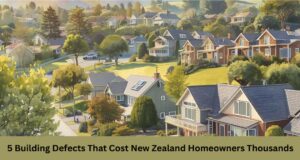Bay Area Median Sale Price Highest Since 2007; Slowest March Sales in 6 Years
La Jolla, CA. – April 17, 2014 – (RealEstateRama) — Home prices in the Bay Area continued to increase at a brisk pace last month, the result of a strong local economy and a tight supply of homes on the market. The number of homes sold was the lowest for any March since 2008, a real estate information service reported.
The median price paid for a home in the nine-county Bay Area rose last month to $579,000, the highest since the median was $587,500 in December 2007. Last month’s median increased 7.2 percent from $540,000 in February, and rose 23.2 percent from a revised $470,000 in March last year. On a year-over-year basis, the median has increased the last 24 months, according to San Diego-based DataQuick.
The median peaked at $665,000 in June and July 2007, then dropped to as low as $290,000 in March 2009. That means roughly three-fourths of the median’s post-financial-crisis decline has been regained.
While some of last month’s year-over-year jump in median can be attributed to a shift toward more mid- to high-end sales, most of the median’s increase can be attributed to rising home values.
“The only part of today’s Bay Area housing market that is still somewhat off kilter is mortgage financing, but even there things are trending towards long-term norms. The rest of the housing market is characterized by good old supply and demand meeting each other at various price levels,” said John Karevoll, DataQuick analyst.
A total of 6,308 new and resale houses and condos sold in March, up 27.1 percent from 4,963 for the month before and down 12.9 percent from 7,243 in March last year. Sales always increase from February to March. Last month’s Bay Area sales were the lowest for a March since 2008, when 4,898 homes sold, and were 27.2 percent below the 8,667 average for all months of March since 1988, when DataQuick’s statistics begin.
Bay Area sales haven’t been above average for any particular month in more than eight years. The most active March was in 2004, when 12,645 homes sold, while the least active was in 2008, when 4,898 sold.
A variety of key market indicators are pointing toward normalcy.
Adjustable-rate mortgages (ARMs), an important indicator of mortgage availability, are incrementally regaining their foothold in the market. ARMs accounted for 25.9 percent of the Bay Area’s home purchase loans in March, up from a revised 23.3 percent in February, and almost double the 13.1 percent for March last year. It was the highest since ARMs were 26.0 percent of the purchase loan market in June 2008. ARMs hit a low of 3.0 percent of loans in January 2009. Since 2000, ARMs have accounted for 47.1 percent of all Bay Area purchase loans.
Jumbo loans, mortgages above the old conforming limit of $417,000, accounted for 52.5 percent of last month’s purchase lending, the highest since it was 58.6 percent in August 2007, when the credit crunch struck. Last month’s 52.5 was up from a revised 48.9 percent in February, and up from 43.2 percent a year ago. Jumbo usage dropped to as low as 17.1 percent in January 2009.
Government-insured FHA home purchase loans, a popular choice among first-time buyers, accounted for 9.0 percent of all Bay Area home purchase mortgages in March, down from 10.2 percent in February and 11.5 percent a year earlier.
San Diego-based DataQuick monitors real estate activity nationwide and provides information to consumers, educational institutions, public agencies, lending institutions, title companies and industry analysts. DataQuick was acquired last month by Irvine-based property information company CoreLogic. Because of late data availability, sales were estimated in Alameda, San Francisco and San Mateo counties.
The number of Bay Area homes that sold for less than $500,000 in March dropped 32.9 percent year-over-year, while the number that sold for more increased 5.2 percent.
Last month distressed property sales – the combination of foreclosure resales and “short sales” – made up about 10 percent of the resale market. That was down from about 12 percent in February and down from about 25 percent a year ago.
Foreclosure resales – homes that had been foreclosed on in the prior 12 months – accounted for 4.5 percent of resales in March, down from a revised 5.0 percent the month before, and down from 10.2 percent a year ago. Foreclosure resales peaked at 52.0 percent in February 2009. The monthly average for foreclosure resales over the past 17 years is 9.9 percent.
Short sales – transactions where the sale price fell short of what was owed on the property – made up an estimated 5 percent of Bay Area resales last month. That was down from an estimated 6.9 percent in February and down from 15.0 percent a year earlier.
Bay Area home buyers put $1.90 billion of their own money on the table last month in the form of a down payment or as an outright cash purchase. That number hit an all-time high of $2.64 billion last May. They borrowed $2.47 billion last month in mortgage money from lenders.
The most active lenders to Bay Area home buyers last month were Wells Fargo with 14.8 percent of the purchase loan market, Bank of America with 4.1 percent and Stearns Lending with 3.7 percent, DataQuick reported.
Last month absentee buyers – mostly investors – purchased 20.7 percent of all Bay Area homes. That was down from February’s revised 23.8 percent and down from 27.0 percent for March a year ago. Absentee buyers paid a median $445,000 last month, up 30.9 percent from a year earlier.
Buyers who appear to have paid all cash – meaning no sign of a corresponding purchase loan was found in the public record – accounted for 25.0 percent of sales in March, down from a revised 28.2 percent in February and down from 31.0 percent a year earlier. The monthly average going back to 1988 is 13.5 percent. Cash buyers paid a median $445,000 in March, up 30.9 percent from a year earlier.
The typical monthly mortgage payment that Bay Area buyers committed themselves to paying last month was $2,303. Adjusted for inflation, last month’s payment was 20.0 percent below the typical payment in spring 1989, the peak of the prior real estate cycle. It was 40.9 percent below the current cycle’s peak in July 2007. It was 81.2 percent above the February 2012 bottom of the current cycle.
Indicators of market distress continue to decline. Foreclosure activity remains well below year-ago and far below peak levels. Financing with multiple mortgages is very low, and down payment sizes are stable, DataQuick reported.
| Sales Volume | Median Price | |||||
| All homes | Mar-13 | Mar-14 | % Chng | Mar-13 | Mar-14 | % Chng |
| Alameda | 1,483 | 1,337 | -9.8% | $416,500 | $530,000 | 27.3% |
| Contra Costa | 1,485 | 1,213 | -18.3% | $346,000 | $423,000 | 22.3% |
| Marin | 309 | 268 | -13.3% | $740,000 | $875,000 | 18.2% |
| Napa | 117 | 107 | -8.5% | $395,500 | $478,000 | 20.9% |
| Santa Clara | 1,618 | 1,477 | -8.7% | $604,000 | $701,500 | 16.1% |
| San Francisco | 497 | 538 | 8.2% | $818,000 | $937,500 | 14.6% |
| San Mateo | 594 | 486 | -18.2% | $676,000 | $767,000 | 13.5% |
| Solano | 580 | 416 | -28.3% | $230,000 | $300,000 | 30.4% |
| Sonoma | 560 | 466 | -16.8% | $370,000 | $447,250 | 20.9% |
| Bay Area | 7,243 | 6,308 | -12.9% | $470,000 | $579,000 | 23.2% |
Source: DataQuick, www.DQNews.com
Media calls: Andrew LePage (916) 456-7157











